top of page

.png)

MIND
MAESTRO
Norse Mythology Art
Norse mythology is a rich tapestry of stories, beliefs and legends that have captivated humans for centuries.
It tells of powerful gods such as Odin, Thor and Freyja, and their battles against giants, monsters and dragons.
These myths also delve into the concept of fate and destiny, as well as the ultimate end of the world, Ragnarok. The gods and goddesses live in Asgard while the monsters live in Jotunheim.
The stories offer valuable insights into the human experience and our relationship with the world around us. The characters and events in Norse mythology are still inspiring art, literature and popular culture today.
Norse mythology include the idea of the cycle of life and death, the struggle between order and chaos, and the human desire for power and immortality, all of which are still relevant to us today.
Odin
Chief of the Gods
"Better to fight and fall than to live without hope"
Odin, the All-Father and chief god of the Norse pantheon, is a complex deity embodying the pursuit of wisdom, leadership and the sacrifices one must make to attain it. He is known for his unquenchable thirst for knowledge, even sacrificing one of his eyes for it. He is also the god of war, leading the Aesir and choosing the fate of warriors in battle. In Norse mythology, Odin symbolizes the idea of sacrifice and the pursuit of knowledge, and the duality of leadership and the weight of responsibility that comes with it.
In Jungian psychology, he represents the "shadow" aspect of the psyche, with his association with war, death and madness. He continues to be a popular subject in modern culture, reminding us of the eternal truth of sacrifice and the quest for wisdom.


Thor
God of Thunder
"I am Thor, son of Odin!"
Thor, the son of Odin and Jörd, is one of the most popular and enduring gods of the Norse pantheon. He is known as the god of thunder, strength, and protection. He wields the powerful hammer Mjolnir, which he uses to defend Asgard and the nine realms from giants and other threats. Thor is also known as a god of fertility, and his marriage to Sif, goddess of fertility, is said to bring bountiful harvests. He also represents the idea of fertility and the cycle of life and death, reminding us that we must nurture and protect the things that bring us life.
In Jungian psychology, Thor can be seen as a representation of the archetype of the "Hero" who faces the challenges and dangers in order to protect and maintain the status quo. He is a force of nature, a wild energy that needs to be tamed, but also a powerful protector of the community. He's the embodiment of the power of will and the courage to act.
Freyr
God of peace
"The walls of a sandcastle may stand for but a moment...but the memory will remain forever..."
Freyr, also spelled Frey, is a god of fertility, prosperity, and peace in Norse mythology. He is the son of the sea god Njörðr and the brother of the goddess Freyja. He is often depicted as a handsome and powerful god, carrying a magical sword and riding a chariot pulled by a golden boar. Freyr is also associated with the weather and is said to be able to control the sun and the rain.
Freyr represents the idea of fertility and prosperity. He reminds us that in order to have abundance in our lives we must care for the earth and all its creatures. He also represents the idea of peace and the balance between different forces, reminding us that we must find harmony in our relationships and within ourselves.


Loki
God of Mischief
"I am Loki, of Asgard, and I am burdened with glorious purpose"
Loki is one of the most complex and controversial figures in Norse mythology. He is known as the god of fire, trickery, and mischief. He is often depicted as a shapeshifter and a master of disguise, able to assume different forms and identities at will. He is also known for his mischievous and cunning nature, often causing trouble and chaos for the other gods and mortals. Despite his devious ways, Loki is also known for his wit and intelligence, and his ability to outsmart his enemies.
In Jungian psychology, Loki can be seen as a representation of the archetype of the "Trickster" who challenges the status quo, and disrupts the equilibrium of the community to reveal the truth and make changes. He is a reminder that change is necessary and that the existing order is not always the best. He encourages us to question authority, and to use our wit and intelligence to outsmart those in power.
Goddess of Love and war
Freyja
"If you can't lay em... slay em!"
Freyja is a goddess of love, beauty, fertility, and war in Norse mythology. She is the daughter of the giantess Njörðr and the sister of the god Freyr. She is often depicted as a beautiful and powerful goddess, riding a chariot pulled by cats and wearing a necklace of precious gems. She is also associated with the afterlife and is said to have the power to resurrect the dead.
In Jungian psychology, Freyja can be seen as a representation of the archetype of the "Great Mother" who symbolizes the nurturing aspect of womanhood and the power of the feminine. She represents the idea of the power of love, fertility and the ability to create and bring new life.
She also represents the idea of the transformative power of death and the idea that death is not the end but a new beginning.


Njord
God of the Sea
“My Heart beats to the waves of eternal oceans”
Njord is the Norse god of seafaring, fishing, wind, and prosperity. He is one of the Vanir gods, a group of deities associated with fertility, wisdom, and the ability to see the future. He is often depicted as a wise and benevolent god, with a long white beard and wearing a cloak of seagull feathers. He is also associated with the sea and is said to control the winds and waves.
He reminds us that we must take risks and explore new horizons in order to discover our true selves and achieve our goals. He also represents the idea of wisdom and the ability to see the future, showing us that we must use our intuition and wisdom to navigate the uncertain waters of life.
Heimdall
God of Protection
"Never has an enemy escaped my watch"
Heimdall is a Norse god known as the "Watchman of the Aesir" and is the guardian of Asgard, the realm of the gods. He is said to possess keen senses and the ability to see and hear everything that happens in the nine realms. He is often depicted as a fierce and vigilant god, standing guard at the rainbow bridge that connects Asgard to Midgard, the realm of mortals. He is also associated with the end of times and the final battle of Ragnarok.
He represents the idea of being the guardian of the bridge between different realms, reminding us that we are all connected and that we must strive to understand and appreciate the perspectives of others. He also embodies the idea of the end of times and the need to be prepared for the inevitable changes that come with it.


Balder
God of Light & Purity
“I am the unknown will... in heaven high and caverns deep”
Balder is a Norse god known as the god of light, joy, purity, and innocence. He is the son of Odin and Frigg and is often depicted as a fair and handsome god with a gentle and peaceful nature. He is also associated with the power of prophecy and is said to be able to see into the future.
Beyond his mythology, Balder represents the idea of light and goodness overcoming darkness and evil. He reminds us that even in the darkest of times, there is always hope and that good can ultimately triumph over evil. He also represents the idea of purity, reminding us to strive for innocence and to keep our hearts and minds free from corruption.
In Jungian psychology, Balder can be seen as a representation of the archetype of the "Child" who symbolizes the idea of innocence and purity, and the potential for change and growth.
Goddess of the Sky
Frigg
"Everyone fails at who they're supposed to be"
Frigg is a Norse goddess, who is known as the queen of the gods and the goddess of marriage and motherhood. She is the wife of Odin and the mother of Baldr, Hodr and Hermod. She is associated with the power of foresight and is said to know the fate of all living things. She is also associated with the protection of the home and hearth, and is often depicted as a loving and nurturing mother figure.
Frigg represents the idea of the ultimate mother figure and the embodiment of the feminine principle. She stands for the idea of nurturing and protection, reminding us to care for ourselves and others and to create a safe and loving environment for ourselves and our loved ones. She also represents the idea of foresight, reminding us to be aware of the consequences of our actions and to think before we act.


Ymir
God of the Giants
“Created from drops of water... forged from the fire of Earth”
Ymir is a giant in Norse mythology, who is said to be the ancestor of all the other giants. He was created from the melting ice of Niflheim and the heat of Muspelheim, and was later killed by the gods, who used his body to create the world. He is often seen as a symbol of chaos and destruction, as well as the raw materials from which the world was created.

Tyr
God of War
"Hail to the One-Handed God!"
Tyr is a Norse god of war, courage, and justice. He is often depicted as a one-handed god, having lost his hand to the giant wolf Fenrir. Despite this, he is known for his bravery and willingness to make sacrifices for the greater good.
Ymir represents the idea of the primordial chaos and the raw materials from which the world was created. The King of the frost giants reminds us that everything has its origins in something else and that everything is connected.
He also represents the idea of destruction and the need for change, reminding us that sometimes things have to be destroyed in order to be created anew.
Beyond his Nordic mythology, Tyr represents the idea of courage and sacrifice. He reminds us that true courage is not the absence of fear, but the ability to act in the face of fear. He also represents the idea of justice, reminding us that true justice requires sacrifice and the willingness to do what is right even when it is difficult.
Tyr is not a well-known figure in modern culture, but when he does appear, he is often portrayed as a symbol of courage and sacrifice in hopes of inspiring us to live courageously like our lives depended on it.

Hel
Goddess of Death
“I have become death, the destroyer of worlds”
Hel, the Norse goddess of death and the underworld. She is the daughter of Loki and the giantess Angrboda, and is said to have been born with a face that was half alive and half dead.
Hel is the ruler of the realm of the dead known as Helheim, where she presides over the souls of those who die of sickness or old age. According to the Prose Edda, a 13th-century Icelandic collection of myths, Hel's kingdom is located in the far north, and is separated from the world of the living by a great river.
Hel is also associated with the idea of acceptance and the ability to let go of what is no longer serving us. She reminds us that death is an inevitable part of the cycle of life and that we should make the most of the time we have while we are alive.
THE NORSE PANTHEON
The Norse pantheon, also known as the Aesir, is a group of powerful deities in Norse mythology. This pantheon is led by the chief god Odin, known as the "All-Father" and ruler of Asgard. He is joined by his powerful son Thor, the god of thunder, and his cunning brother Loki, the trickster god. The goddess Freyja, goddess of love and fertility and the god Freyr, god of fertility and prosperity also hold important roles.
The Norse pantheon is a complex and diverse group of deities, each with their own unique characteristics, powers, and stories. They are associated with natural elements and aspects of life such as war, wisdom, fertility, and death. They are also said to be involved in the lives of mortals and to have the power to shape the fate of the world.
In Norse mythology, the pantheon is often depicted as a powerful and dignified group, who are revered and respected by the mortals. But at the same time, they are also depicted as being just as flawed and complex as human beings. This complexity gives them a realism and relatability that has made them enduring figures in the world of mythology and storytelling.
The Norse pantheon is not just a collection of powerful deities but also a collection of allegorical truths that are meant to teach us valuable lessons about human nature and the world around us. They are a reminder that the virtues and vices we see in them are also present in ourselves and that we can learn from their stories.
More Norse Mythology
_PNG.png)
Home of the gods
Asgard
“Asgard is not a place. Never was. This could be Asgard. Asgard is where our people stand"
Asgard is the realm of the gods in Norse mythology. It is said to be located in the heavens, and is home to the Aesir, the principal gods of the Norse pantheon, including Odin, Thor, and Freyja. It is also a place where the souls of brave warriors, who died in battle, known as the Einherjar, live.
In Norse mythology, Asgard is described as a place of great beauty and splendor, with golden halls, lush gardens, and sparkling jewels. The gods live there in peace and prosperity, feasting and making merry, and enjoying the pleasures of the senses.
Asgard is also depicted as a place of great power and authority, where the gods make decisions that affect the fate of the world. It is said that the gods hold their great council in Asgard, where they debate and decide the fate of the world and its inhabitants.
Asgard is an important part of Norse mythology and culture, and it serves as a symbol of the celestial realm, where the gods live..
Norse Mythology Art Prints

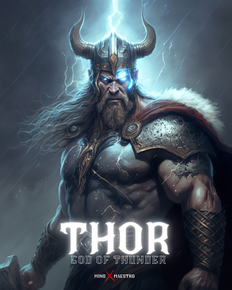
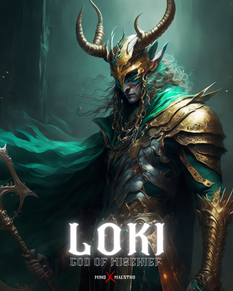
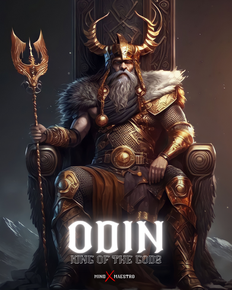



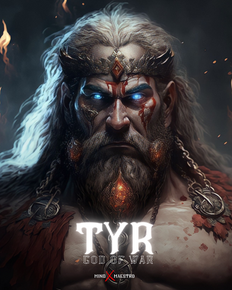


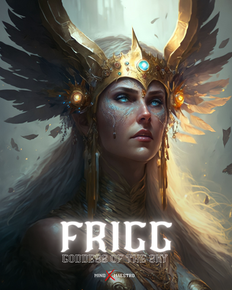

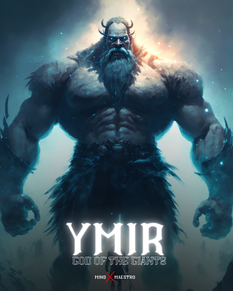

MIND
MAESTRO
FAQs
What is Norse mythology?
Norse mythology refers to the collection of myths and legends from the Northern Germanic tribes, primarily the Scandinavians, who lived during the Viking Age. It centers around the gods, goddesses, and heroes of the Norse pantheon, as well as their beliefs and values.
What was the Norse creation myth?
In Norse mythology, the creation of the world began with the formation of the primordial realm of chaos, which was eventually separated into the realm of fire and the realm of ice. The first living beings, the gods and the giants, were born from the merging of these two realms.
What was the Norse afterlife like?
The Norse afterlife was divided into several different realms, including Valhalla, the hall of the slain warriors, and Helheim, the underworld for those who did not die in battle. Some people were also believed to be reincarnated.
What was the importance of Valhalla in Norse mythology?
Valhalla was one of the most important places in Norse mythology and was seen as a reward for warriors who died in battle. It was believed to be a hall where they could continue to fight and feast with the ancient Norse gods, and that they would be reincarnated to fight again after their deaths.
What was the significance of Ragnarok in Norse mythology?
Ragnarok was the Norse apocalypse and was seen as the final battle between the gods and the giants. It was believed to signal the end of the world and the beginning of a new cycle of creation.
Who were the 12 main norse gods?
The 12 main Norse gods were Odin, Thor, Freyja, Loki, Heimdall, Balder, Tyr, Ymir, Njord, Frigg, Freyr, and Hel. The Vikings had a rich pantheon of epic tales and battles which have survived hundreds of years.
Does Norse, Egyptian, and Greek Mythology teach similar allegorical truths?
Greek, Egyptian, and Nordic Mythology, despite their cultural and geographic differences, share many similarities in the way they present allegorical truths about the human experience. These mythologies use stories about gods, heroes, and monsters to explore themes such as mortality, the nature of good and evil, the consequences of pride and ambition, and the struggle between order and chaos.
What are some epic Norse Mythology Stories / Viking Tales?
The Prose Edda: This collection of Old Norse poems and stories provides an overview of Norse mythology and includes stories about the gods, giants, and dwarves.
The Poetic Edda: This collection of Old Norse poems is a rich source of Norse mythology and includes some of the most famous stories of the gods, such as the creation myth and the end of the world story known as Ragnarok.
The Saga of the Ynglings: This Old Norse story details the origins of the Swedish royal family and includes tales of magic, adventure, and battles.
The Saga of the Volsungs: This epic story tells the tale of the legendary hero Sigurd, who slays the dragon Fafnir and reclaims the treasure hoard guarded by the dragon.
Beowulf: This Old English epic poem, set in Scandinavia (Northern Europe), tells the story of the hero Beowulf and his battles against the monster Grendel and the dragon that threatens his people far away.
The Lay of Thrym: This Old Norse poem tells the story of Thor's quest to retrieve his stolen hammer and features the trickster god Loki.
bottom of page
_edited_edited.png)













.png)


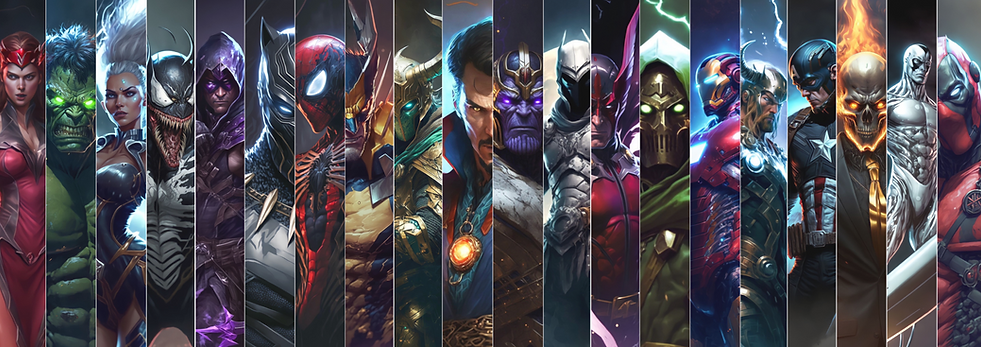.png)
.png)













